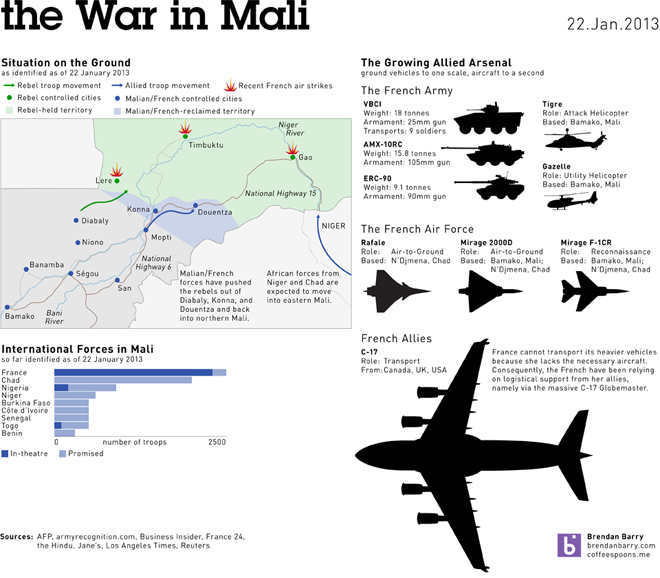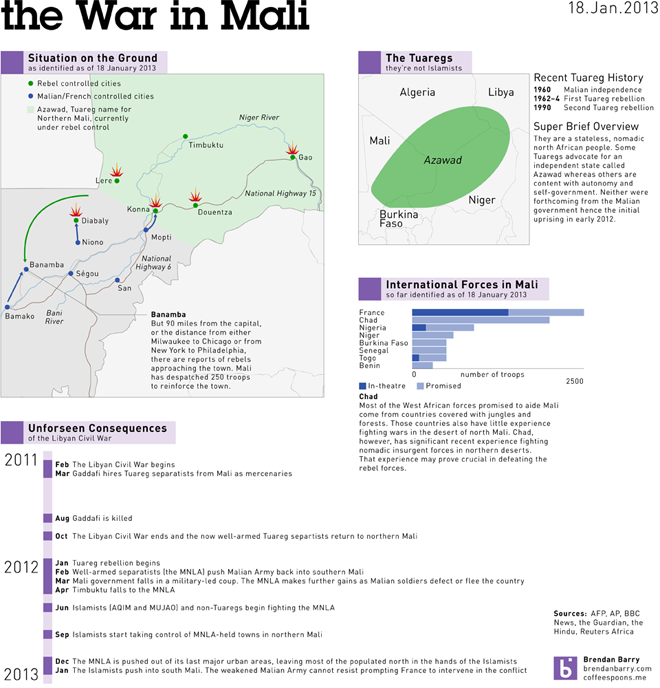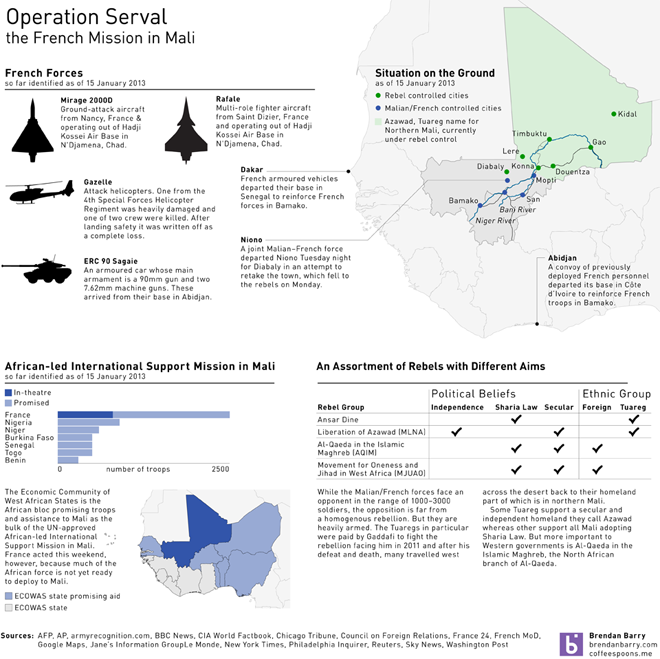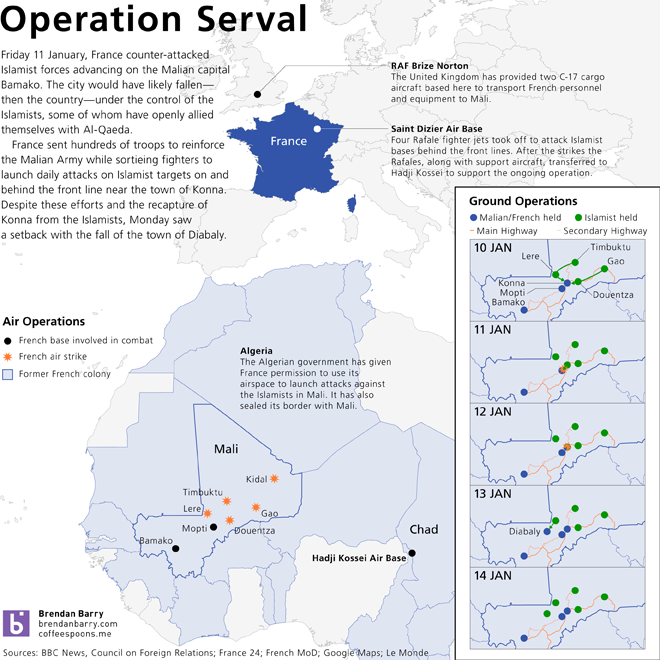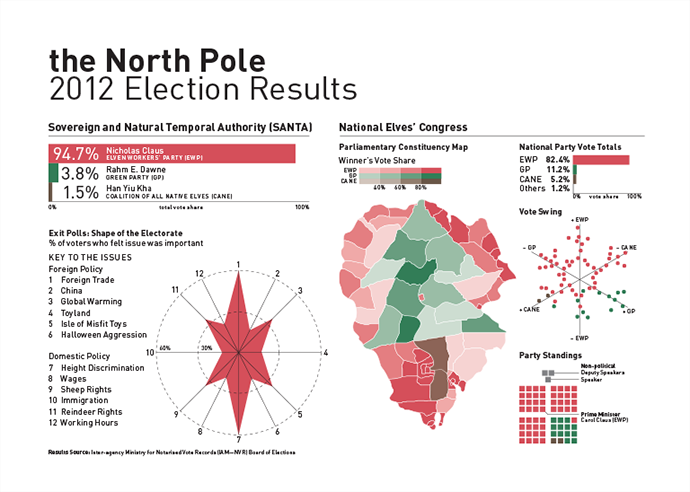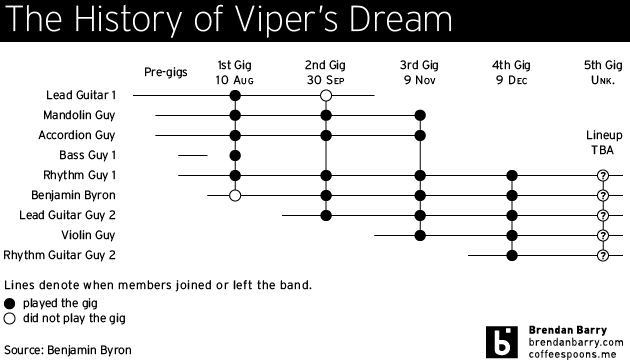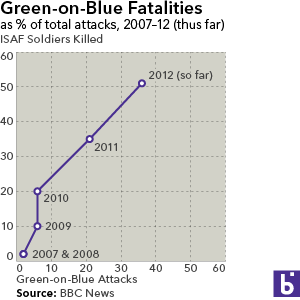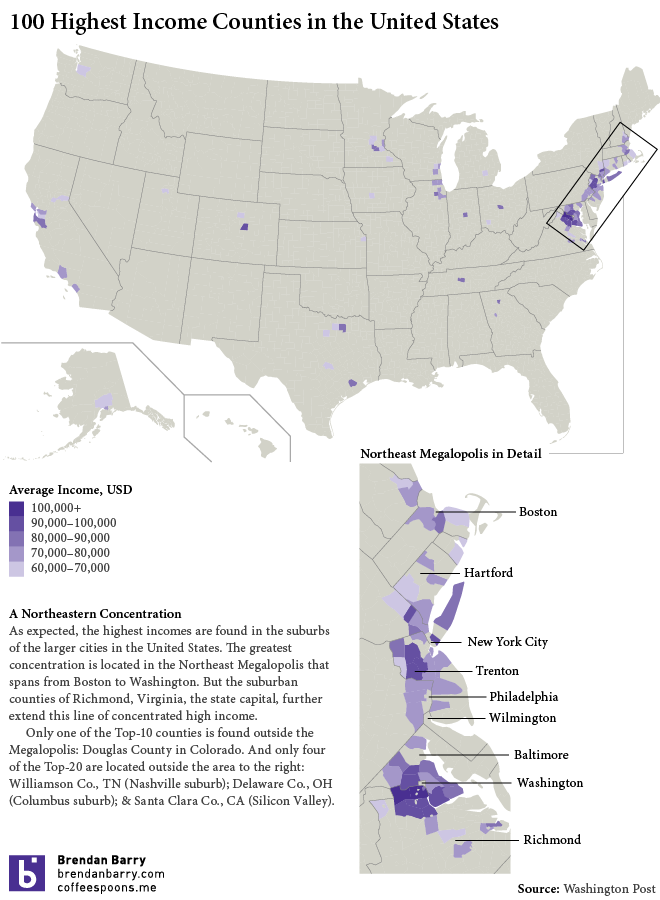Malian and French forces in Mali have begun to slowly retake cities and towns in the conflict zone and are slowly pushing into northern Mali, which has been held by the Islamists for nearly a year. My infographic for today looks at recent troop movements and the growing arsenal of French weapon platforms involved in the war.
If the conflict is highlighting anything about the French military, in my mind it is the lack of support elements in the French air force. France cannot transport, on its own, its heavier vehicles and helicopters without the assistance of its allies. The first week was largely supported by two British C-17 transport aircraft. Also of some note is the fact that despite the era of drones, France is still relying on human-piloted reconnaissance aircraft because of a lack of sufficient numbers of surveillance drones.
Click for the full-scale image.
